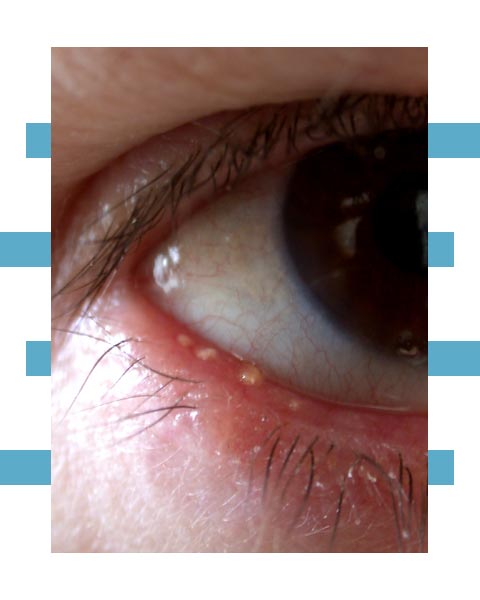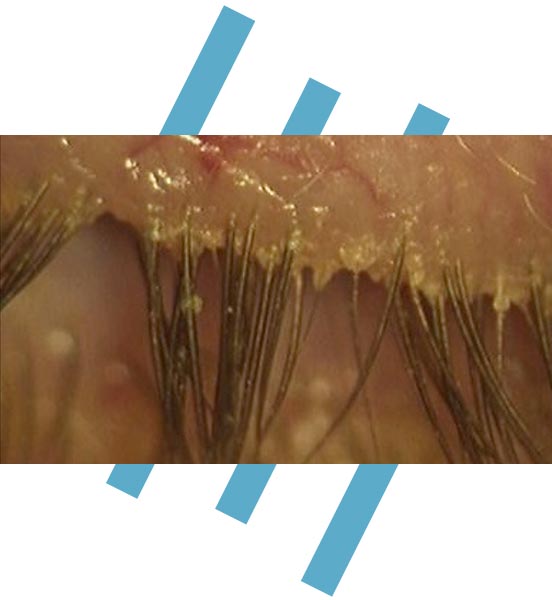Blepharitis
inflammation strongly correlated with dry eyes
Understanding blepharitis
Blepharitis can result from a variety of causes: bacterial infection (staphylococcus) or viral infection (herpes), allergy, dermatological disease, particularly rosacea, which is often accompanied by this inflammation. So-called posterior blepharitis, located on the back of the eyelids, is most often caused by dysfunction of the Meibomius glands.
Eyelids are red, irritated and swollen. They can be glued on when you wake up. The affected person feels a burning sensation or a foreign body. Crusts may form at the base of the eyelashes. Blepharitis caused by obstruction of the Meibomian glands can be chronic. Chalazions may also appear.


Evolution and treatment
Blepharitis is unsightly and embarrassing, but does not cause corneal damage or loss of vision. As a result, it is sometimes overlooked by sufferers and ophthalmologists alike. However, it is essential that it be treated, especially as it tends to recur. Chronic blepharitis predisposes to dry eyes, due to the instability of the tear film it induces.
First, we treat the cause of the inflammation: removal of the allergen in the case of allergic blepharitis, antivirals in the case of viral blepharitis, antibiotic ointment or eye drops in the case of bacterial blepharitis, and so on. But beyond that, eyelid hygiene care (EHC) is essential and must be maintained over the long term to avoid recurrences. Just as oral hygiene has become standard practice, eyelid hygiene should not be neglected.
By reducing inflammation, SHPs are indicated for all types of blepharitis.
Eyelid hygiene care
The concept of eyelid hygiene has evolved over time. Eyewash with a glass eyepiece and eyelid cleansing with a sterile wipe, which are inadequate in cases of Meibomian gland dysfunction and/or blepharitis, have given way to a more effective therapeutic arsenal.
The “heat-massage-clean” triad is now the rule.
– Warm up: eyelids should be warmed up for 5 to 10 minutes, ideally using a mask to be placed in the microwave or bain-marie. Moist heat of around 43°C is recommended. Moist-heating goggles are also available.
– Massage: directly after heating, massage the eyelids firmly to release liquefied secretions from the Meibomius glands. Massage can be performed with the fingertips or with an adapted medical silicone device.
– Cleansing: the eyelids are cleansed with a specific solution, preferable to a simple saline solution, focusing on the free edges and eyelashes. In any case, an eyewash may be useful at the end of each treatment.
This care should be daily, or twice-daily, especially for people with blepharitis.

Note: some ophthalmologists offer microblepharo-exfoliation sessions. This technique, which involves completely cleaning the eyelid with a dedicated electric brush, has proved effective as a complement to twice-daily hygiene care, particularly in cases of demodex blepharitis (an infectious form caused by Demodex mites).
